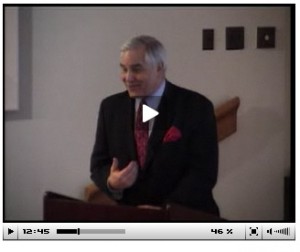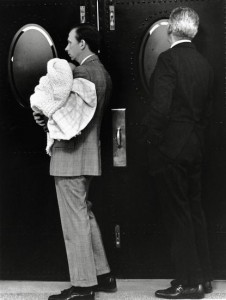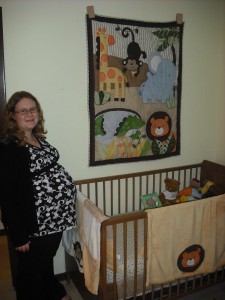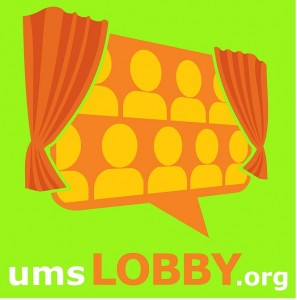Search Hundreds of Photos… and 100 Years of Concert Programs
Finally–the time has come! Thanks to the Ann Arbor District Library, we launched the beginnings of the UMS digital archive!
UMS President Ken Fischer launched the archive March 14, 2010, with a special talk about UMS’s history. You can watch the whole thing here:
The AADL has digitized the first 100 years of UMS concert programs as well as hundreds of photos from our photo archive. It’s a work in progress, but we couldn’t wait to share it with you.
The AADL is building a searchable database so that we can link all of this great history together. We’re also continuing to scan and tag photos, and making plans to digitize our old-fashioned card catalog of artists and repertoire, so that you can pick your favorite symphony and search for every time it was performed on our stages and by whom!
A quick walk through of the site.
Along the left hand side, you’ll see a menu with a few options:
Browse Programs: Here, you’ll find a comprehensive list of every concert from our first season through the 1978/1979 season. Click on a program, and you’ll see images of the concert program. Click on the images, and they will enlarge and given you an option to view them in full-screen.
Search Programs: Here, you’ll find a simple search box. Type in a keyword: a date, artist, piece title, composer, venue–click “search,” and it will pull up every program that matches your keyword. (Remember–it only covers programs through the 1978/79 season so far.)
Browse Images: My favorite! Scroll down to the search box and type in a keyword–an artist, company, venue–and it will pull up any photos that are tagged with that keyword. For example–if you type in “Bernstein”–you’ll see photos of Leonard Bernstein, photos of the Bernstein benefit, and tons of scanned contact sheets from his Ann Arbor visits (some of which only a few people have ever seen before!). Click on a photo to enlarge it. NOTE: When your search results appear, make sure to click the button under the search box that says “Show all #” as there may be more photos than the three that appear.
We hope you enjoy playing around with the site, and remember, there is MUCH MORE to come! Thanks so much to our great partners at the Ann Arbor District Library for helping us share our history. Stay tuned!
Hubbard Street Dance Chicago: Your Questions Answered!
Editor’s note: Hubbard Street Dance Chicago return to Ann Arbor on October 27, 2015.
To close out this season’s Dance Series, we had three mesmerizing performances by Hubbard Street Dance Chicago on April 22-24. For a long time, members of our staff had wanted to try out the concept of a “post-it wall” in the lobby for a performance. We thought it would be interesting to try this with a dance company because dance can inspire so many different feelings, interpretations, and questions.
Throughout the weekend, Company dancers and touring staff loved seeing your comments on the wall (as did other audience patrons and we)! There were three different opportunities to respond:
-Describe tonight in six words or less.
-What was your favorite piece?
-Leave a question for the Company.
Glenn Edgerton, Hubbard Street Dance Chicago’s Artistic Director, was kind enough to answer all the questions you left on the wall. Thanks, Glenn!
Last dance (Walking Mad): why not end on the high note? The slow piece at the end wore the audience down…you could have had a standing ovation without the slower dance.
Often choreographers like to contrast their work and basically “keep it real”. Once they give you that feeling of excitement and euphoria their thought process is to bring you back down to reality and emotionally give you one last profound statement to contemplate.
If you are sad during a performance do you have to smile?
As a dancer, you also have to be an actor. If the part requires a smile, then yes you have to be able to perform the work with the emotional content as it is intended.
Did another company perform Bitter Suite? Sounds familiar.
Jorma Elo has also made a work for Aspen Santa Fe Ballet called “Red Suite” but not sure if they ever performed in Ann Arbor. (UMS Note: Neither of these works have ever been performed under UMS auspices.)
Was the volume to the music for Walking Mad turned down on purpose? Why?
Yes, the music volume gets turned down to create the image of the music coming from another part of a house or space. Just prior to this moment the dancers are with party hats and dancing through the doorway evoking a party scene. Once they pass through, the space changes and traps the female dancer in another space and then the music is meant to seem like it is coming from a distance from where the party is happening on the other side of the wall.
Is this the only theater you perform at where the audience posts questions?
Yes, this was a unique idea of UMS.
How many times a week do you practice?
We rehearse five days a week. When there are performances however this might turn into six days a week.
How do you synchronize so accurately when the music is so nondescript from measure to measure?
Practice, practice, practice. But actually, once you work with music for a while it starts to become more apparent where the landmarks are at least.
When you turn off your cameras and cell phones during the performances how do the photographers get pictures for the brochure?
We have individual agreements with photographers to get pictures during technical rehearsals and sometimes in performances; consequently they are the only ones with the rights to keep their cameras turned on.
How many shows did you perform so far?
In Ann Arbor we had four performances in total—one was a school show.
Why not have the choreographers explain what they are trying to express?
The idea is to have your imagination cultivated during the performance and to find the expression that fits for you and your life.
Which dance was your favorite to perform, and why?
Since I am the artistic director I can’t answer that for the dancers but I know from my past and know from our current dancers, typically the most challenging work, physically and emotionally, becomes a dancer’s favorite; although as a director they are all supposed to be equally important.
Why not have a more descriptive breakdown of each program included in your guide?
This is a similar question from before; the description should be your description and not told to you but rather for you to create and imagine.
Why did you choose to portray violence?
If that is your image from what you saw that is certainly valid. I can’t imagine however, you thought it was all violent. We always try to show a wide range of emotions and physicality in one evening.
Are you all friends?
Yes, we are all friends. As with any group you are often closer to some than others but everyone gets along very well with each other.
Are your bows choreographed as part of the dance?
Bows are often the last thing to be rehearsed but yes they are planned.
How many weeks does it take to learn a piece?
Learning a piece and creating a piece are two different things. To learn a piece already existing can take as little as two weeks to four. Creating a new work for a third of an evening (approx. 25 min) usually takes four to five weeks.
How old were you when you started taking dance lessons?
Me personally, I was six. Each dancer has a different past and process to their dancing career.
How long have most of you been dancing?
Most of our dancers started at a young age, typically around eleven, but occasionally you will see a dancer who started at four and others who started at eighteen.
Do you struggle with injuries?
Injuries are an unfortunate reality to being a dancer. You are always trying to go further with your movements to increase your range of movement and dynamic qualities therefore strength issues and structural issues become a definite struggle.
Dude, wasn’t it awkward to have your family see you topless and still convince them you’re not that kind of dancer? –>Are you an idiot?
This was a two part comment. The subsequent post-it, asking the other messenger if he was an idiot, drew an arrow to the first question. I actually have strong opinions about both of these statements. Even the word topless makes me cringe. That part of the piece was meant to express vulnerability and a nakedness of raw emotion, not to be gratuitous or sexual in any way. The men did not wear shirts for the entire piece and therefore this moment when the woman doesn’t either, evokes a sense of equality and a double standard of nudity in our society. The second statement is a judgment that also makes me cringe. Each individual has their interpretation of the experience which I would hope is respected although I encourage each audience member to go deeper into his thoughts to find an aspect that makes him see beyond the obvious.
Do you eat fish?
I’m assuming this is a comment from a piece we have had in the repertory in the past called “Minus 16” where one of the dancers has spoken text, which he asks, “Do you eat fish?”
Is the chemistry between partners difficult to foster or does it come naturally?
Sometimes as a director you get an immediate sense of who will have chemistry with another and then there are other times surprises come forward in a very holistic way; each pairing is different.
How has your experience with the company resembled your image of Hubbard Street at the start?
I can only speak from my perspective but I have found that the company is much more down to earth and that the organization breathes a sense of humbleness and enthusiasm for the work whereas you might guess the opposite in such an internationally respected company.
When will you perform here next time?
As often as possible; there are no dates set as of now.
How is it decided which pieces will be performed together?
The pieces are discussed with the presenters of the venue to get a sense of their audience and what will fit best with them. There is always an attempt to show a versatile program with contrasting music, movement qualities, emotional qualities and production values.
What are you wearing on your feet?
Most often ballet shoes but some pieces are danced bare foot and others require a characterization in the costuming which would dictate what a dancer wears such as street shoes or dance sneakers.
When will you come to Rochester NY?
As often as possible; there are no dates set as of now.
Was the girl really topless? Sorry, color blind!
In the last pas de deux of 27’ 52”, the female and male dancers were bare chested.
Do you weight train?
Some dancers do weight training to enhance their strength during their spare time but it is not part of their work day.
Are you ever tempted to laugh while performing?
All the time. Usually some funny element happens during a performance but it’s up to the dancer to be so concentrated in their part and not let those things phase them or react to them.
Does your mother know what you’re up to?
If this is in regard to the nudity, the answer is yes. I believe every parent is extremely proud to have their child expressing art at this level.
Are you nervous before a show?
Always.
How long do you work on a show?
Each show is different depending on how often the pieces have been danced in the past, but about a month to five weeks is typical to prepare a new program.
How would you describe the earthquake in Chile?
The earthquake in Chile was surely devastating. We were meant to tour there prior to our engagement in Ann Arbor until this happened. Now we are scheduled for next spring 2011 to tour there. You could imagine an earthquake to be depicted in the final moments of 27’ 52”.
What does “staged by” mean after “choreographed by” is already listed?
The choreographer will generally send someone they designate to teach a piece on our dancers which means this person gets credit for “staging” the work whereas the choreographer still remains as the creator of the piece.
Here are some of our favorite responses to the other questions. Thanks to everyone who participated–we loved hearing from you!
They say it takes a village – well my village is the UMS Usher Corps
Six years ago, UMS hired me to be their Front-of-House Coordinator, which largely included organizing the UMS Usher Corps. You can imagine the intimidation I felt when I learned that as a 24-year-old-brand-new-college-graduate I would be leading a group of 500+ volunteers!
My fear, however, quickly subsided when I realized that this was the best group of people to know in town! In fact – they are Ann Arbor. As someone who was brand new to town (and no longer a student) they invited me in and took me under their wing. They showed me where the best restaurants are, told me about the free birthday yummies available, and taught me the feeling of living in a small town amongst 50,000ish students.
And then there is their amazing commitment to UMS! For many – countless hours arriving early for performances, stuffing programs, and preparing to transform the various U of M venues we rent into a home for UMS for the evening. This group of people has the ability to set the beginning of what we hope will be a powerful evening of music, theater or dance by welcoming and seating our patrons.
Two years ago, UMS promoted me from Front-of-House Coordinator to Assistant Ticket Office Manager. It was a great opportunity which I gratefully accepted, but I was slightly worried that I would lose the incredible relationship I had cherished throughout the previous four years. Yesterday afternoon I was proved wrong. I was managing the ticket office at Rackham Auditorium for the Schubert Piano Trios and was asked to come to the inner lobby. I was then greeted with applause by the Rackham ushers and two large gift bags for my-very-soon-to-be-born first child!
What a shock! I am overwhelmed with gratitude. After two years, not only had word spread that I was going to be a mom, but this amazing group gathered money (in a very challenging economic time) to purchase a complete nursery set. I am so reassured that this is the right community to raise a child in. Thank you, UMS ushers, for your support over the past 6 years, for the wonderful baby gifts and most of all, thank you for being my village.
Launching the UMS Lobby with Bela Fleck!
bright orange tablecloths + neon green t-shirts + fortune cookies + flip cams + an amazing concert with Bela Fleck = THE LAUNCH of the UMS LOBBY.
It was amazing to see many of you at the first Live Lobby Meet-Up after the Bela Fleck/Africa Project Concert on Feb. 17 in Hill Auditorium! Many UMS volunteers, staff, and student interns were on hand to talk about our new online community at www.umsLOBBY.org. Bela Fleck signed CDs after the show. And we hope you snagged a fortune cookie with a special message inside!
Audience members had some great things to say after the concert, and we tried to catch some of them on flip cam (see the video above — starring YOU!).
You can also see photos from the event here (if you had your pic taken with Bela Fleck, this is where you’ll find it):
Have more to say about the event? Join the conversation…
When the Bela Fleck performance ends, we hope you’ll stick around…
Join us in the Hill Auditorium lobby after the Bela Fleck concert this coming Wednesday, Feb 17th, for our first live UMS LOBBY event!
The UMS LOBBY is all about having great conversations with other people who enjoy the performing arts. So while you wait to have your CD signed by Bela, check out the new www.umsLOBBY.org site by using the laptop stations we’ll have setup in the main lobby at Hill Auditorium.
Share your views with fellow concert-goers both online and in-person, chat with UMS staff and volunteers, and checkout our special giveaways.
umsLOBBY.org is a new place to gather for conversation about arts and culture. Help us spread the word!
Welcome to umsLOBBY.org!
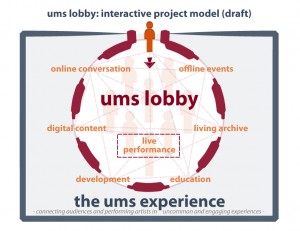 In June 2009, UMS was one of four organizations awarded an “Innovation Lab” grant by EMCArts, with support from the Doris Duke Charitable Foundation. The grants were awarded to allow organizations to develop an idea that could have a profound impact on how they do business.
In June 2009, UMS was one of four organizations awarded an “Innovation Lab” grant by EMCArts, with support from the Doris Duke Charitable Foundation. The grants were awarded to allow organizations to develop an idea that could have a profound impact on how they do business.
During the summer, a team of UMS staff members and volunteers researched new ideas related to social media. A week-long intensive retreat in October resulted in further development of this project. We’re now prototyping the UMS Lobby project with this new website and blog, and with several live events that will happen during the next three months as we wrap up the 09/10 season.
The UMS Lobby will expand and redefine what we mean by “the UMS experience.” By combining online and live components in everything UMS does, we’ll enable a greater amount of people to engage more continuously and deeply with each other, with the extraordinary history of UMS, with the artists we now present, and with the life of UMS in Ann Arbor and throughout the region.
The UMS Lobby is a place where people meet, exchange ideas, and build relationships — a bridge between daily life and the special places we devote to artistic experiences. UMS has many “lobbies,” and we’ll use these physical spaces in new ways to welcome our audiences and invite them to learn from us and from each other. And, of course, the learning goes both ways — we at UMS always find that we learn so much from you, our audiences, whenever we have the opportunity to meet up socially.
At the same time, the UMS Lobby is a virtual space, accessible year-round, where we will offer multiple streams of activity to engage anyone interested in art and ideas, or in UMS specifically. Among the virtual offerings — some of which are already active, and some of which are still in development:
- A multimedia blog with text, video, audio, photos, and links (that’s what you’re reading now!)
- Conversation areas that include feeds from our facebook, twitter, and other networks, but that also provide a place to listen and to be heard
- A digitized historical archive that includes access to UMS’s extraordinary 131-year history, including the opportunity to submit your own comments, memories, and observations about events that you’ve attended. We’re working closely with the Ann Arbor District Library to bring this project to fruition.
- Stories from patrons and others about the impact of UMS —in essence, a “living archive” that will grow with time and supplement the historical archive
So what does this mean for the regular UMS website? You can continue to visit www.ums.org for all of the information you need about UMS and upcoming events — sound clips, video clips, program notes, and information about purchasing tickets. Think of ums.org as a site filled with information, and umsLOBBY.org as a site filled with conversation.
So what do you think? What do you want to read more about? Let us know — we want to hear from you!
See you in the “Lobby”!


